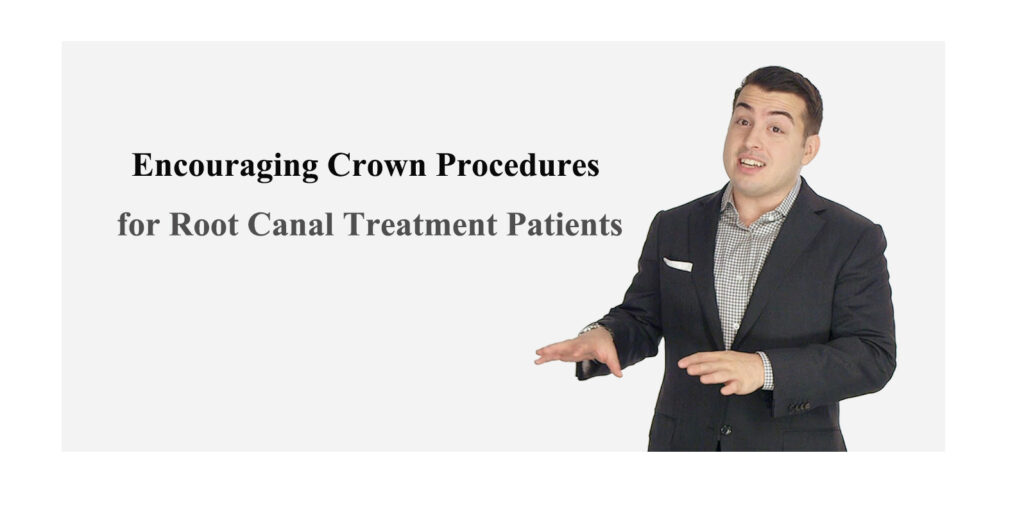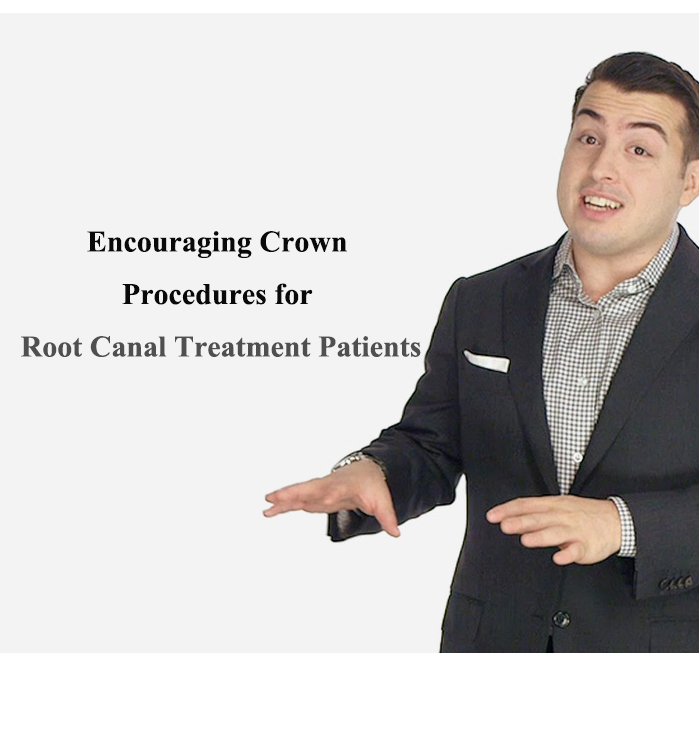
The premise for convincing customers to undergo crown procedures is to provide them with a good experience during their visit and treatment. Trust forms the foundation.
Reasons why customers may reject crown procedures:
*Lack of perceived need for crown repair during treatment: If the customer only seeks relief from toothache without seeing the need for crown repair during treatment, they may perceive the recommendation for a crown as a profit-driven motive.After alleviating the pain and then suggesting a crown, he’ll feel like you’re trying to make money off of him. The more customers suspect your financial motives, the more defensive they become, and the more they resist spending money.
How to do?
Let him know about the process and techniques of all-ceramic crown restoration.
It is generally divided into pre-treatment, treatment, and post-treatment stages.
First, use an intraoral camera and take X-rays to show him the extent of tooth decay, such as large areas of decay in the oral cavity. If the decay is deep or has reached the dental pulp, explain this to him.We’ll start with the treatment, but what happens after treatment? First, fill it up. However, in the case of the sixth tooth, where the bite force may be significant, a crown may be necessary depending on the situation.
Filling treatment normally be introduced in pre-treatment,to let him less pressure first.
On the other hand, during the procedure, take breaks and communicate the purpose of the techniques being used. Why are we doing this?
*Lack of understanding: Some customers may not comprehend why crown procedures are necessary after treatment.
How to do?
Show him x-rays picture or oral camera picture for better understand.
*Insufficient trust: It’s essential to build trust before discussing crown procedures.
How to do?
Quickly alleviate his pain, especially during acute episodes. Of course, it’s easy to establish trust when the pain is severe.
Utilize visual aids such as diagrams or intraoral cameras to illustrate the necessity for crown procedures, considering factors like cavity size and occlusal forces.
*Limited treatment options: Presenting only one solution may lead customers to feel pressured or skeptical about the recommended crown procedure.
How to do?
Provide clear different option for him.All three options can solve the problem, but the extent to which they address the issue varies. and see customer feedback
Three option:
| first option | second option | third option | |
| treatment | root canal treatment combined with post and core restoration | root canal treatment combined with inlay or onlay. | root canal treatment combined with filling. |
| advantage | Provides strong structural support for the tooth, especially in cases with extensive decay or weakened tooth structure. Offers durability and stability for crown placement. | Preserves more natural tooth structure compared to post and core restoration. Offers a conservative approach for restoring teeth with moderate decay or damage. Provides good aesthetics and function. If he is afraid of grinding his teeth, then inlay or onlay can be suggested. Inlays can be minimally invasive, not requiring grinding down the adjacent teeth. Additionally, they offer color simulation, form, durability, and provide protection for neighboring teeth in terms of health. | Simplified procedure compared to post and core restoration or inlay/onlay placement. Can be a cost-effective option for restoring teeth with minimal damage or decay. Requires less invasive tooth preparation. |
| disadvantages | Requires additional procedures for post placement, which may increase treatment time and cost,It requires grinding down the adjacent teeth, adjusting both sides of the teeth | May not provide as much structural support as post and core restoration, especially for severely compromised teeth. The longevity of the restoration may depend on the strength of the remaining tooth structure. | May not provide adequate support for a crown, especially in cases of extensive decay or damage. The longevity of the restoration may be limited compared to more extensive restorative options.This method is limited to simply filling the tooth cavity. However, there is a possibility of fracture when biting hard substances. The drawback of the material is its tendency to shrink. Considering the significant biting force of tooth number six, coupled with the location being subjected to functional pressure, and the material being relatively soft, there is a risk of fracture. In case of fracture, the only outcome would be extraction, leading to additional expenses and undergoing the discomfort of dental implant surgery. |
Other what we can try do:
*Building complexity: Showcase confidence in handling complex cases while demonstrating expertise with techniques such as root canal treatments involving multiple canals or curved canals.
Assistant be your support also:No problem with this. Our director is particularly authoritative in this area. We’ve handled many cases like this one.This procedure is relatively rare in our area, but there’s no issue with it. We have intraoral cameras and microscopes available, and we can perform the procedure under magnification. Although it’s a bit complex, we prioritize preserving the teeth because they’re your natural teeth.
*Establishing authority: Reassure customers by highlighting the experience and authority of the dental team, particularly in dealing with uncommon cases.
The material is inexpensive, semi-finished, but it needs to achieve the desired results. What does achieving the desired results entail? It includes aspects such as bite functionality, durability, and overall oral health. These are strategies and techniques for shaping its value appearance.
Why use a large taper for root canal instrumentation? Why use this type of rubber dam? Explain the significance to the patient. Shape our authority, responsibility. For example, in the past, we used hydrogen peroxide, but now we use sodium hypochlorite. For instance, in the past, Formocresol had toxic effects and stimulated the periapical area. What do we use now? Calcium hydroxide, which is neutralizing, etc. These are healthier and more effective. What are the international standards for explaining technical procedures? What are we fully pursuing? International technical standards. Equipment technology that matches our expertise. Instead of blindly performing procedures.
*Explore other customer pain:
Fear of discomfort: most people will fear of pain.Emphasize painless procedures to alleviate the customer’s fear of pain during treatment. Establishing a comfortable experience can build long-term trust and loyalty.
They fear toothaches. They fear experiencing pain again.
What do they fear even more? Their top concern is tooth fracture. However, if you haven’t informed them about the possibility of fracture, there won’t be resonance. They might feel that the likelihood of fracture is small and not believe it.
If they truly fear fracture, what else concerns them? Reduced functionality is a major worry. Some teeth become loose or have diminished biting force after restoration. When restoring teeth or placing crowns, what’s the purpose? It’s about being able to eat properly.
What else concerns them? They fear that it won’t last, and they’ll have to replace it in a couple of years. This is what they’re afraid of. You need to understand their psychology.
Another situation is what they care about the most. They want to spend money once and for all, never experiencing pain again, never needing to visit the dentist again. They expect their teeth to last a lifetime, accompanying them throughout their lives.
What else? Pursuing price is one aspect. What else? Pursuing value for money. Consumers don’t necessarily prefer cheap things, but rather, they seek value for money. It’s not about buying the cheapest option; it’s about finding what’s cost-effective. Can they afford it? Can they compromise a bit? Can they receive some freebies?So,we should highlight the long-term benefits of crown repair, such as durability, functionality, and aesthetic appeal, to justify the investment.


